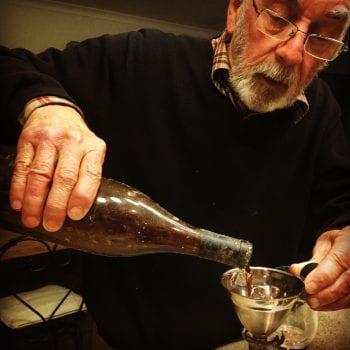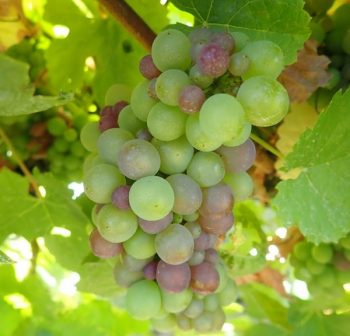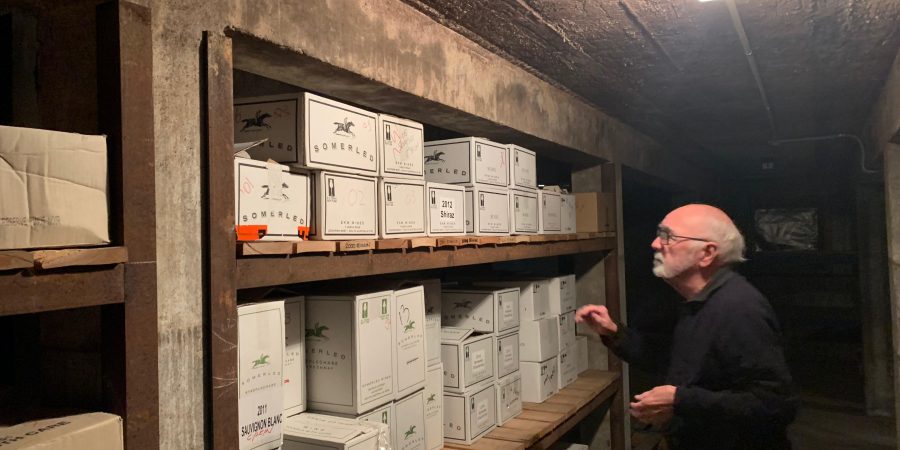
Before I get on with the serious stuff this week, one of my favourite dates on the wine calendar is coming up this Saturday (25th Feb).
It’s called…
“Open That Bottle Night”
And basically, it is the day you open THAT bottle. The one you’ve been saving for the “perfect” special occasion but, so far, have not got around to opening.
The idea was the work of husband and wife team Dorothy Gaiter and John Brecher – American journalists, authors and wine critics. They jointly wrote the wine column “Tastings” in The Wall Street Journal between 1998 and 2009. In the late 90s Gaiter and Brecher invented the annual “Open That Bottle Night” (OTBN), encouraging their readers to open a symbolically significant bottle, and then share their stories.
OTBN is celebrated on the last Saturday of February. Life’s too short never to drink those special bottles. So why not open one on Saturday night?!
And if you’re into posting your bottles on social media… don’t forget to use the official hashtag #openthatbottlenight
Now, before I head to the cellar to figure out which bottle I’m going to open, let’s have a quick…
VINTAGE UPDATE
E-L stage
Early varieties have reached E-L 35, berries beginning to colour and enlarge. Later varieties are still at E-L 33, berries hard and green.
This vintage is still a fair way behind previous years.
Colour development in Pinot Gris at Lenswood is following the slower trajectory recorded for V22 and remains one week behind that season. This is currently three weeks behind V21.

Colour development in Shiraz at Macclesfield has only just begun. It is currently two weeks behind V22 and V17 and five weeks behind V18. Hopefully, the weather this week will speed things up a little.

Loving our blog? Sign up for weekly updates straight to your inbox…
VERAISON
I mentioned last week that this change in colour for the berries was an important milestone in the vineyard.
It’s called veraison and here’s why it’s so significant…
 Veraison (pronounced verr-ray-zon) is very much the turning point in a vine’s annual lifecycle. At this stage, the vine changes its focus from energy creation (via photosynthesis) to energy consumption.
Veraison (pronounced verr-ray-zon) is very much the turning point in a vine’s annual lifecycle. At this stage, the vine changes its focus from energy creation (via photosynthesis) to energy consumption.
Veraison is specifically defined as the stage at which three simultaneous but separate processes begin…
1. Each berry softens as the cells within the grapes begin to produce more juice and the skin becomes thinner.
2. Sugar starts to accumulate and acidity of the grape starts dropping away.
3. Colour starts to change – from green to red in red varieties and from green to translucent in white varieties.
Before veraison begins, the berries are still very small, hard, acidic and green (due to the presence of chlorophyll). At E-L stage 35, the vine starts to move its energy stores from the roots and leaves into the berries. The chlorophyll is converted to anthocyanins (in red varieties) or carotenoids (in white varieties), sugars and other compounds, many of which are the precursors to the flavours and aromas which we can taste in the resulting wine.
Following the onset of veraison, the ripening process then takes anywhere from 30–70 days for the grapes to become fully ready to make wine. The grapes still have a lot of growing up to do during that time. In fact, each berry will double in size between now and when they are picked.
Right, now I’m off to find THAT bottle.

Well, I never knew about OTBN but it’s in the diary now 😉
Keep cool,
Bob